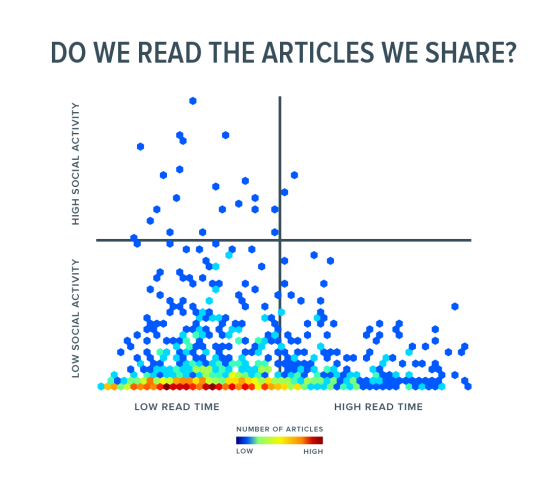If you click on a link to this article and share it on social media, should we think that you have actually read it? That’s what previous best practices would lead us to believe. Google was founded on the “click.” The ability to measure the “click” has allowed marketers to tie ads to consumer action. So, for the last 20 years, the click-through rate has been the go-to metric for Web performance.
However, new technology that measures second-by-second and pixel-by-pixel behavior is proving that clicks are pretty poor indicators of actual engagement.
While new tools for capturing data are available, some churches may not be able to utilize them because of the expense. However, all churches can research the new findings and learn how organizations are adapting to the attention-based Web.
Myth 1: People read what they click on.
Tony Haile at Chartbeat looked at a random sample of 2 billion page views generated by more than half a million articles on 2,000 sites (mostly media companies). He wanted to learn which types of topics generated more engagement. Chartbeat defines engagement as "the amount of time, measured in seconds, that a person is actively interacting with their browser.” It also measures where the users have scrolled, typed, navigated or moved their mouse.
They found that a stunning 55 percent of those who click spend fewer than 15 seconds actively on a page. August 2013 articles with both high clicks and engagement tended to be actual news (Obamacare, Edward Snowden, Syria). Articles with high clicks and little engagement were more generic (Top, Best, Biggest, Fictional). According to the TIME article, “All the topics above got roughly the same amount of clicks, but the best performers (news-related articles) captured approximately five times the attention (measured by time, scrolling and clicking) than the worst performers (generic articles).”
Key Takeaway: We must learn different ways to keep our readers engaged. Attention-getting titles must be backed-up with attention-keeping content.
Homework: Implement these ideas for engaging readers:
- How to move people to give or take action
- Use the art of storytelling to resonate
- Common elements in viral videos – with examples!
Myth 2: People read the articles they share on social media.
Chartbeat found that of 10,000 articles shared on social media, there was no relationship between high shares and the amount of attention (actual reading) given to that content. This chart displays their results:

Many times, people scan the headlines and images to decide if the content is “shareable.” Maybe the title sounds interesting, and it makes people feel good to support or share the idea. They may not have time to read the article, but they believe that other people will, so they click, share and move on. Don’t misunderstand. Social shares are great, and they do help your search rankings. However, you also need to use a tool like Google Analytics to see if people are actually spending time on those “shareable” pages. If you are getting high bounce rates on those highly shared articles, it means they’re not as engaging as you thought. Subsequently, those bounces could be detrimental to search rankings. Use Google Analytics to see what pages people are coming to from social media sites. Again, be sure the content backs up the provocative titles.
Homework: Complement social media with other marketing channels.
Use Google Analytics to learn what web pages are being consumed by people who come through search and social media. If people are spending a lot of time on certain pages, take advantage of the visibility and add a couple of prominent social share buttons before and after the content. These pages deserve more attention, so consider adding digital media, visuals and creative writing.
Promote engaging pages using other marketing channels such as enewsletters and blogs. Add links and annotations in your video marketing that direct people to important sections on your website.
Search engine optimization (SEO) may be a great way to reach visitors who are already primed for engagement. People who come to your site for the first time through social media, probably found your link randomly because something piqued their interest. Generally, these are passive visitors who are not as engaged as a person who finds your content through search engine results.
People landing on your site from a search engine are looking for specific answers and willing to spend time sifting through the top results. If your church website caters to them, then consider improving your church website’s search results.
To reap all the benefits of these marketing tools, consider all web pages a work in progress. Continually tweak and evolve your website. The more your church engages with people who are searching for answers, the more vital it will become.

